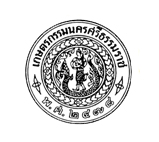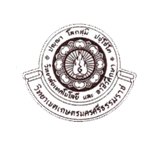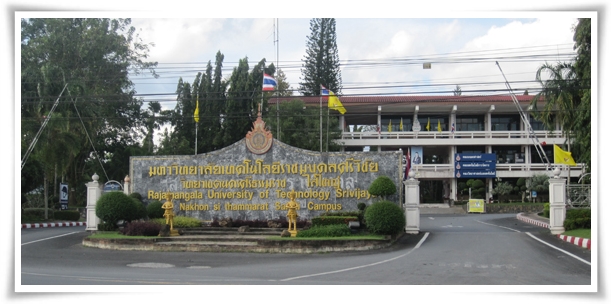




From the condition of the forest at the foot of the mountain in Ban Sai Yai, Thung Song District, Nakhon Si Thammarat Province, it was adjusted by the physical and mental strength of the villagers of Na Luang Sen, Pak Phraek, Nong Samet and Chamai until it became a place to provide agricultural knowledge according to the idea of Luang Prachan Chudarak, the District Chief of Thung Song and Khru Chum Chananarong, the Education Officer of Thung Song District at that time who wanted to develop agriculture for farmers in Thung Song District to be prosperous and modern according to academic principles. They received a budget of 400 baht until this forest area of approximately 552 rai became the “Thung Song District Agricultural Non-Formal Primary School” on December 23, 1935.
Thung Song District Agricultural Non-Formal Primary School
“Thung Song District Agricultural Non-Formal Primary School” provides free education. Students who enroll here do not have to pay any fees, but it is limited because it only accepts male students who have completed Grade 4 in Thung Song District to be boarding students at the school. It takes 2 years to complete the course. The school was opened for only 2 years before it had to stop accepting students in 1938 in order to prepare for the transfer of the business to a government school in 1939. Khru Chom Manophong became the principal, taking over from Khru Prom Wichian, and the name was changed to “Nakhon Si Thammarat Agricultural School”.


Primary School for Agriculture in Thung Song District
“Primary School for Agriculture in Thung Song District” provides free education. Students who enroll here do not have to pay any fees. However, it is limited because it only accepts male students who have completed Primary 4 in Thung Song District to be boarding students at the school. It takes 2 years to complete the course. The school was opened for only 2 years before it had to stop accepting students in 1938. This was to prepare for the transfer of the business to a government school in 1939. Khru Chom Manophong was the principal, taking over from Khru Prom Wichian. The name was changed to “Nakhon Si Thammarat Agricultural School”.
Nakhon Si Thammarat Agricultural School
Nakhon Si Thammarat Agricultural School after the transfer of the business to a government school, but the mission of imparting knowledge still focused on agriculture. Khru Sinuan Bangliang was the third principal in 1941 and Khru Witan Santi was the fourth principal in 1946. It also opened a vocational education level. The Agriculture Department, a 3-year course, was established as another department until 1956 when the Lower Vocational Certificate course was abolished and the Higher Vocational Certificate course, Agriculture Department, was opened as a 3-year course, accepting those who had completed Mathayom 6 or equivalent. The admission to students was expanded from Suphan Buri Province down to Narathiwat Province, a total of 22 provinces, receiving a subsidy of 1,500 baht per person per year until 1962 when the subsidy was abolished, but the teaching mission continued until 1964 when the Higher Vocational Certificate course (equivalent to an Associate’s degree) was opened, accepting those who had completed a Vocational Certificate in Agriculture or a Higher Vocational Certificate in Agriculture (Mathayom 6 in Agriculture) to study for another 2 years until 1965 when the Ministry of Education elevated the status of Nakhon Si Thammarat Agricultural School to “Nakhon Si Thammarat Agricultural College” on March 19, 1965.
Nakhon Si Thammarat Agricultural College
Nakhon Si Thammarat Agricultural College is under the Department of Vocational Education, Ministry of Education. It is considered the first college in Nakhon Si Thammarat Province. In 1967, the Department of Vocational Education organized Nakhon Si Thammarat Agricultural College to be a college under the Vocational Education Development Loan Project (1967-1971) and received a budget of 13,971,012 baht to construct a three-story school building (currently Building 3), three student dormitories, two agricultural-mechanical laboratory buildings, and government housing for both families and singles. This greatly improved the learning atmosphere. Parents therefore preferred to send their children to study there each year. In 1977, Nakhon Si Thammarat Agricultural College was transferred to the College of Technology and Vocational Education, a newly established department-level agency in the Ministry of Education. This was to provide education at both the bachelor’s and lower bachelor’s degrees in vocational education. Nakhon Si Thammarat Agricultural College therefore changed its name to the College of Technology and Vocational Education, Nakhon Si Thammarat Agricultural Campus.



College of Technology and Vocational Education, Nakhon Si Thammarat Agricultural Campus
College of Technology and Vocational Education, Nakhon Si Thammarat Agricultural Campus provides only higher vocational certificate (Vocational Certificate) in Agriculture for 2 years and secondary agricultural teacher certificate (P.M.K.) for 2 years. In order to expand opportunities for vocational graduates to continue their studies at a higher level, in 1982, College of Technology and Vocational Education, Nakhon Si Thammarat Agricultural Campus expanded the area to support undergraduate students to the Faculty of Agriculture, Nakhon Si Thammarat at Ban Khon Forest Reserve, Sai Hak, Thung Yai District, Nakhon Si Thammarat Province. In 1988, College of Technology and Vocational Education, Nakhon Si Thammarat Agricultural Campus received a new name as Rajamangala Institute of Technology. As a result, Nakhon Si Thammarat Agricultural Campus changed its name to Rajamangala Institute of Technology, Nakhon Si Thammarat Campus.
Rajamangala Institute of Technology, Nakhon Si Thammarat Campus
Rajamangala Institute of Technology Nakhon Si Thammarat Campus After receiving the new name, 2 years later, the education was expanded to offer a Bachelor of Science program (4 years) in Plant Science, Animal Science and Fishery. It accepted graduates of secondary school in the science-mathematics program. In 1997, another Bachelor of Science program was offered, in Landscape Technology. In 2001, a Bachelor of Business Administration program in General Management was offered to expand the education to be more diverse. Then in 2005, the Rajamangala Institute of Technology was separated into 9 universities according to the Rajamangala University of Technology Act, combining 5 units in the south, consisting of Southern Campus, Trang Campus, Khanom Campus, Faculty of Agriculture Nakhon Si Thammarat, and Nakhon Si Thammarat Campus, to become Rajamangala University of Technology Srivijaya. On January 19, 2005, Nakhon Si Thammarat Campus was changed to Rajamangala University of Technology Srivijaya, Nakhon Si Thammarat Campus.

